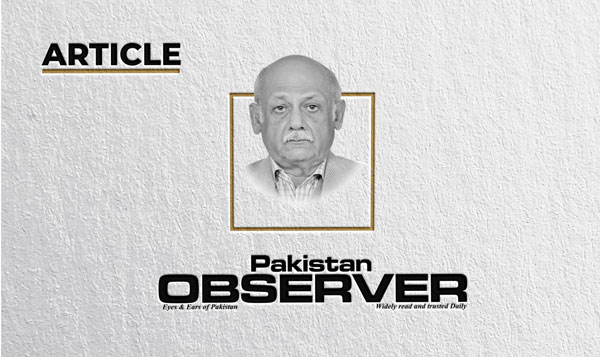Decline of Pakistan & phenomenal rise of India
PAKISTAN today is in the vortex of a crisis ranging from the economy, politics and social problems. Ironically the bureaucracy, military establishment, religious leaders or the all-important political elite all seem to be without an iota of sense about how to stop this head-on-collision of the country with economic political disaster that is now looming on the horizon. The crisis began with the dispute between the Prime Minister and the COAS about the appointment of the new head of the country’s premier intelligence agency in June 2021and this dispute burst onto to the national press and the screens of the electronic media leading to a vote of no confidence against the PTI government and the change of command at the Federal Level.
Ordinary citizens of Pakistan are now paying a very heavy price for the tiff between the regime of Imran Khan and the army establishment. We have an economy in free fall the rising dollar, price spiral unemployment and a bleak economic future. The ongoing battle of words between the headless leaders of the PDM and the severely narcissistic and full of himself cult leader of the PTI called Imran Khan. The rise in religious extremism and bigotry is once again threatening the very foundations of the country and the situation now is really and truly at the stage of a staggering crisis with no light at the end of the proverbial tunnel.
Our national leaders will be well advised to have a cursory look at our next door neighbor India, a country classified from birth as our most ardent enemy and the need to crush this evil has been one of the pillars of our national policy. This country has made phenomenal economic and social progress and is now reaping the rewards of a balanced foreign policy.
After the recent G-20 summit in India and a meeting between the National Security Advisors of the USA and India and the meeting of the initiative on critical and emerging technologies (ICET) in Washington DC it was announced “The United States and India affirm that the ways in which technology is designed, developed, governed and used should be shaped by our shared democratic values and respect for universal human rights. We are committed to fostering an open, accessible and secure technology ecosystem, based on mutual trust and confidence that will reinforce our democratic values and democratic institutions.” In Pakistan we are still smarting under the barrage of abuse and accusations directed towards the USA and the falsely concocted narrative of an international conspiracy so cleverly concocted by the former Prime Minister Imran Khan. Modi and Biden during their meeting in May 2022 announced to do everything possible to elevate and expand strategic technology partnership and defence industrial cooperation between the governments, businesses and academic institutions of the two countries. See who participated from both sides – the US Administrator of the National Aeronautics and Space Administration, the Executive Secretary of the National Space Council, senior officials from the Department of State, Commerce, Defence and the National Security Council. From the Indian side, the Ambassador to the United States, the Principal Scientific Advisor to the Government of India, the Chairman of the Indian Space Research Organization and senior officials from the Ministry of Electronics and Information Technology and the National Security Council Secretariat participated. India today occupies the top position in the Indo-Pacific policy of the USA through many bilateral and multilateral partnerships such as Quadrilateral Security Dialogue (QUAD), Eurasian Economic Union (EAEU), Asia Europe Meeting (ASEM), BRICS and OIC (observer status). India is on track to become the world’s third largest economy by 2027, surpassing Japan and Germany and have the third largest stock market by 2030, thanks to global trends and key investment the country has made in technology and energy. It is already the fastest growing economy in the world having achieved 5.5% average gross domestic product growth over the past ten years. Presently the three major economic thrusts of India are global off-shoring, digitalization and energy transition are taking the country towards an unprecedented economic progress and growth and positively impacting the life of over one billion people. “We believe India is set to surpass Japan and Germany to become the world’s third-largest economy by 2027 and will have the third-largest stock market by the end of this decade,” says Ridham Desai, Morgan Stanley’s Chief Equity Strategist for India. “Consequently, India is gaining power in the world order and in our opinion these idiosyncratic changes imply a once-in-a-generation shift and an opportunity for investors and companies.” All told, India’s GDP could more than double from $3.5 trillion today to surpass $7.5 trillion by 2031. Its share of global exports could also double over that period, while the Bombay Stock Exchange could deliver 11% annual growth, reaching a market capitalization of $10 trillion in the coming decade. In a new Morgan Stanley Research paper, analysts working across sectors look at how this new era of economic development could bring about staggering changes: boosting India’s share of global manufacturing, expanding credit availability, creating new businesses, improving quality of life and spurring a boom in consumer spending.










